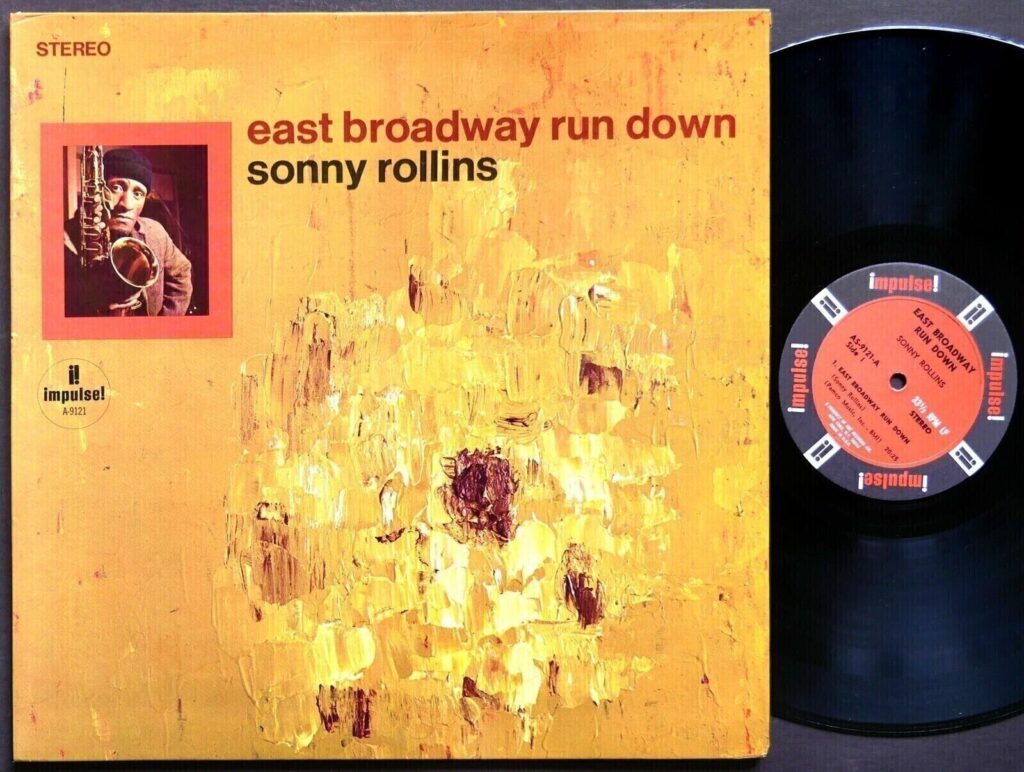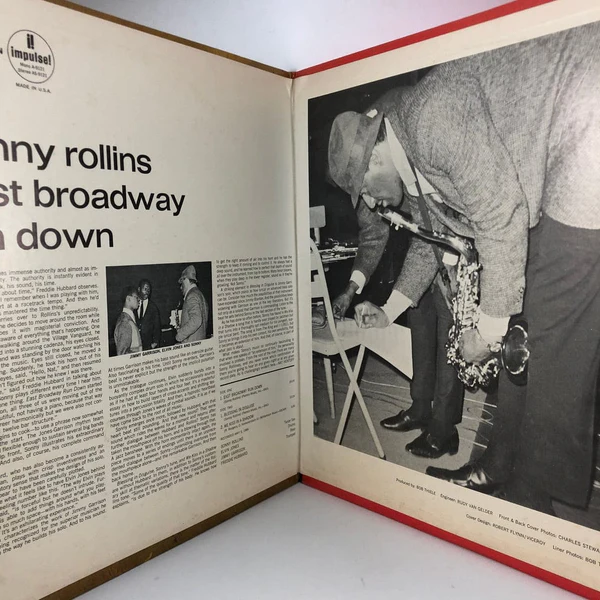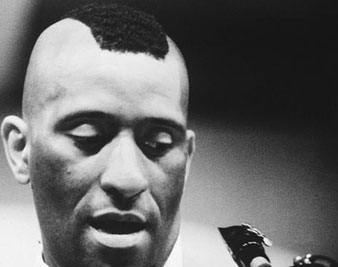Fall ’83 and, as if weekly church services weren’t insufferable enough, the Sacrament of Confirmation required mandatory tutelage, also once a week, on Sundays, which meant our soccer games (and football viewing, this being the glory days of the mighty NFC East and the tag-team of Madden/Summerall) were bookended by sixty minutes of mass and two-hours-that-seemed-like-eternity, deep diving into scripture and what it meant to graduate from kiddie pool theology to a more mature reckoning of bread & body, blood & wine, and why all altar boys are not created equally (in the eyes of pedophilic priests).
My old man pulled me, at halftime, from a soccer game so I wouldn’t miss a minute of one weekly lecture and I remember sitting there, resenting his intractable Catholic sensibility, sweating, and even more miserable than the average 13 year old. But then a miracle (albeit a minor one) occurred, almost redeeming the indignity of being consigned to a dark church pew on a gorgeous autumn afternoon: the priest (whose name I remember but will keep anonymous), who was a Jesuit (which, among other things, meant he had put in serious work, not only for his ecclesiastical studies but a wide range of topics, which certainly added a welcome substance to his sermons), walked us, line by line, through the Apostles’ Creed (“we believe in one god…”), explaining not only the meaning of each word, but the nuances, the biblical and literary references, and doing so with an enthusiasm I’d later recognize—and appreciate—in my best college professors. This, in short, was the first time I had the benefit of witnessing a close textual analysis, and it wasn’t simply the erudition I couldn’t help but admire, but the passion with which it was delivered, the conviction he conveyed—the only person on the planet at that moment talking about that thing in the way that only he could; I was witnessing purpose, and something inside me (which would begin to flower while enthralled by those professors several years later) was stirred: this was beyond grudging respect or humility, it was a life lesson concerning dedication, practice, and pursuance. And even as I was already taking baby steps away from organized religion (steps that would turn into urgent strides once I saw, learned, and experienced more about our wicked world), this afternoon signaled an early awakening of my own curious sensibility, one I continue to nurture today.
All of which brings us to…Flea. Yes, the hyperactive bassist from the Red Hot Chili Peppers. I’ve had three different friends forward me a short video clip of him declaring (not incorrectly) that Sonny Rollins’s East Broadway Run Down is the greatest f’ing record ever.
Can He Get a Witness?

This happens to be the album of Sonny’s I most love, even as it’s not often listed first or even third when his awesome discography is discussed. It’s not only a masterpiece, but a mission statement. It’s many other things, too, but it’s one I seldom recommend for, unlike so much Miles, or Monk, or Coltrane, or even Mingus, this is not an album one puts on at a party (or, if so, that’s the party I want to be at). It’s not especially abrasive or discomforting, as some of the more free jazz from the mid ‘60s can be, but some considerable prep and home-schooling is required (just as one is expected to read some Robert Frost before cliff-diving into T.S. Eliot or Anne Sexton, or having mastered the Filet-O-Fish before trying sushi for the first time). It’s an intense, exhausting experience: to “get” it you need to be fully present and dialed in for the duration—which is an entire side of his album of the same name. It’s like a roller-coaster that doesn’t slow down for 20-plus minutes, or Round One of Hagler-Hearns played out, impossibly, over that same period of time.
It’s a holy relic of sorts, a track that, like Father ____ with his textual analysis, warrants a line-by-line exegesis; every sound, every reaction, every feeling. It starts hot, gets scorching, and never cools off. It blasts out of the gate like an avenging angel, sent by a Higher Power to make shit right. Jimmy Garrison’s extended (brilliant!!!!) bass solo could alone require an entire chapter to describe, and Elvin Jones, always sounding like Godzilla in a NYC Subway, releases the MF Kraken like no other drummer has before or since, a single snare shot enough to give you the right kind of religion, while young hotshot Freddie Hubbard calls down the thunder Gabriel-style. And Sonny, at the height of his unparalleled powers, is as loose and free as he ever got in the studio. Perhaps the most notable playing occurs when, having seemingly taken the instrument as far as it can go, Rollins begins blowing through his mouthpiece (!!). The resulting sounds are many things: spooky, surreal, unsettling, and awe-inspiring. Nothing else anyone has ever done sounds anything like this, and it’s ceaselessly exciting to hear Garrison and Jones hold down the fort while Sonny leaves the room for a while and goes to that sublime other place where very few artists are capable of going.
I grew up and put away childish things, but I learned enough (and was given half the chance to figure out some other stuff) to know when I’m witnessing sacred acts. This music is my religion, and while I’ll never be the type to go door-to-door proselytizing, I offer this up, with humility and the only-slightly frantic eye of the converted. Jump in and drown in these sounds. Peace be unto you all.
More Sonny. From my first collection The Blackened Blues, here’s “Sonny Rollins’s Bridge” (Gratitude to the wonderful Burningword Literary Journal for publishing this poem.)
There are certain artists who are so incomparable, as artists, as human beings, as role models, that enough good things cannot possibly be said. There are not many in this category, but if anyone is, Rollins must be included. Ceaselessly humble, relentlessly ambitious and seldom (if ever) satisfied with his performances, Rollins is the rarest of birds: the enlightened being who figured out early on how to live life in full, on his own terms, and has never strayed from that almost monastic path.
The last century blessed America with more than a handful of geniuses whose lives and work will be studied and appreciated many, many centuries after they are gone. Rollins is most definitely on the short list of masters who can teach us a great deal about ourselves and how we should aspire to be, and in the process, as all great art inevitably does, make that life quest immeasurably richer and more enjoyable in the process.
Sonny Rollins’s Bridge
It wasn’t his bridge, of course.
It wasn’t even his city, and it certainly wasn’t
his world. It’s your world, jazz music says,
I’m just living in it. And the world’s a workshop.
Sonny was different, though. Even for one
we’d call young gifted & black without being
bromidic. Sonny heard so much but mostly
only listened to himself, waiting and creating
his own kind of way, expressing everything.
How do we describe the kind of man already
in rarified air deciding he wasn’t high enough
(having already eschewed the artificial ecstasy
that ruins veins and soils brains, Body & Soul)?
This colossus, keeping his own council, split
his apartment to set up shop in the crow’s nest
of the Williamsburg Bridge, perhaps the one
place aside from the Arctic Circle where no one
could see or hear history being picked apart
like a carcass, and then reassembled in real time.
Three years of this. Almost a thousand days
while the world spun, the cash registers rung,
and so many pretenders to the throne ascended
for lack of better options. Sun turned to snow
and dawn turned to dark and there were still
all those sounds: a style being tweaked, a gift
being refined, an experiment being improvised.
The quest for vision, it’s said, will make
otherwise steady men see outlandish sights:
as they deprive themselves of human fuel
they become something at once less & more
than a vessel; the spirits speak to and through
them and once that barrier is broken, one sees
oneself changed, then begins changing the world.
(*In 1959, feeling pressured by his unexpected rise to fame, Rollins took a three-year hiatus to focus on perfecting his craft. A resident of the Lower East Side of Manhattan with no private space to play, he took his saxophone up to the Williamsburg Bridge to practice alone.)


